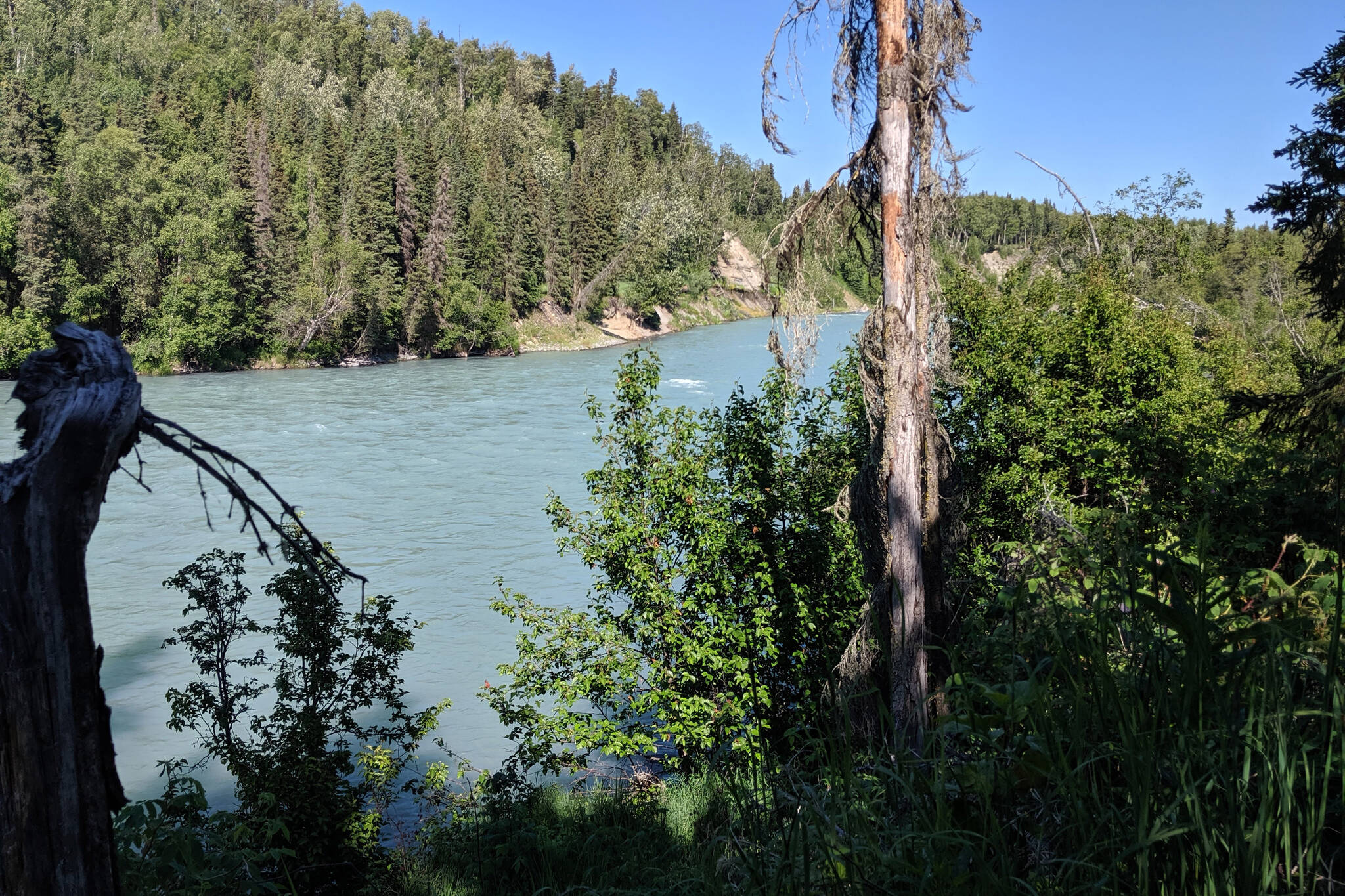An emergency order issued by the Department of Fish and Game on Wednesday will continue a restriction on king salmon fishing in the Kasilof River — limiting anglers to the use of only one single hook without bait and retention of only hatchery produced kings.
The order, 2-KS-1-33-23, prohibits retention of naturally-produced king salmon and imposes the gear restriction. It will go into effect Saturday and remain in place throughout July. It replaces a similar order, 2-KS-1-08-23, that included the same restriction on naturally-produced king salmon but did allow for the use of bait. That order expires Friday, so the new order will ensure the restriction remains in effect.
The previous order was among 11 emergency orders published by the department in March that closed the Kenai River and Cook Inlet to sport fishing for king salmon and also closed the east side setnet fishery entirely before their season had started. Those closures came in response to the continued decline of king salmon returns.
At an Alaska Board of Fisheries meeting that same month, Department Commissioner Doug Vincent-Lang said that those closures were based on department predictions, and that king salmon fisheries could be reopened if enough king salmon ran this season.
Per daily fish counts available on the department’s website, as of Tuesday, around 1,800 king salmon have been counted at the Kenai River sonar station, with three days left in the early run. The optimal escapement goal is between 3,900 and 6,600 kings. This year’s count falls below each of the last four years. Last year at this time, 1,900 king salmon had been counted, and in 2021, there had been 3,900.
“Current passage rates are significantly below historical averages,” reads an in-season run summary published last week. It says those in-season projections complement preseason forecasts and that based on current information, closures will remain in effect.
As a result of the more complete closures of king salmon fishing on the Kenai River, without the availability of hatchery salmon, the department says it expects additional pressure to be put on the Kasilof River.
“King salmon runs across Southcentral have experienced an extended period of low abundance,” says Acting Area Management Biologist Jenny Gates in the Wednesday announcement. “In order to minimize the effects of conservation actions for the Kenai River, it is warranted to prohibit retention of naturally-produced king salmon on the Kasilof River to ensure adequate escapement of Kasilof River late-run king salmon and protect late arriving early-run naturally-produced fish destined for Crooked Creek.”
Hatchery salmon can be recognized by their missing adipose fin, and a healed fin-clip scar where one would have been. Naturally-produced king salmon, those with an intact adipose fin, may not be removed from the water and must be immediately released.
For more information about fishing regulations and availability, visit adfg.alaska.gov.
Reach reporter Jake Dye at jacob.dye@peninsulaclarion.com.

